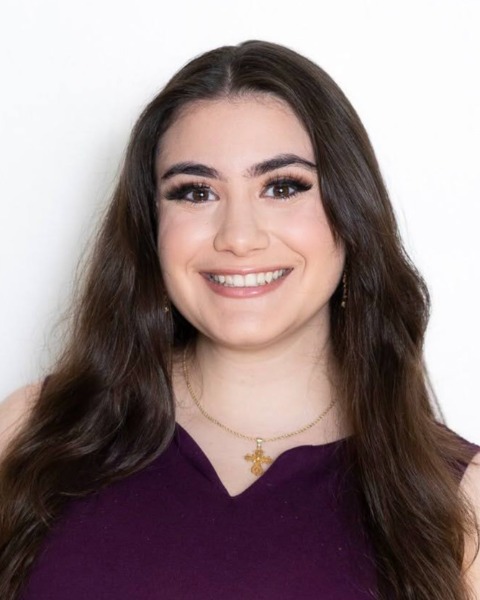Tissue Engineering
Tissue Engineering - Poster Session B
Poster BB11 - Enhancing Functional Hepatocyte Cells for Developing a Human Brain-Liver-Gut Microphysiological System (MPS)
Thursday, October 24, 2024
2:45 PM - 3:45 PM EST
Location: Exhibit Hall E, F & G

Katherine Scoullos (she/her/hers)
Graduate Student
Rensselaer Polytechnic Institute
Paramus, New Jersey, United States
Presenting Author(s)
Introduction: In regenerative medicine, Microphysiological Systems (MPS) aim to revolutionize organ processes in vitro and improve our understanding of human responses to stressors.1,2 Here, we focus on the development of liver organoids, involving precise differentiation of human induced pluripotent stem cells (hiPSCs) to recapitulate liver function, including metabolic homeostasis and drug metabolism.3,4 This work explores iPSC differentiation into hepatocytes, highlighting methodologies, key markers, and implications for liver physiology. We will explore the broader application of integrating these hepatocytes within multi-organ MPSs to incorporate brain and gut components emulating the intricate multi-organ interactions in an automated in vitro environment. This interdisciplinary approach promises transformative advancements in disease modeling, drug discovery, and personalized medicine in a concise manner.
Materials and
Methods: Cell Culture and Hepatocyte Differentiation: The JAX943 iPSC cell line was cultured on Matrigel-coated plates in mTeSR™ plus medium, with passaging every 4-6 days using ReLeSR. Hepatocyte differentiation followed a stepwise protocol: iPSCs were induced into definitive endoderm using RPMI 1640 medium with Activin A and B27 Supplement, then hepatic specification with BMP4, FGF2, and B27 Supplement, followed by hepatoblast formation with HGF and B27 Supplement, and finally maturation in Hepatic Culture medium with oncostatin M. Cholangiocyte differentiation followed a similar protocol until day 15, then differentiated into cholangiocytes using specific medium.
Characterization of Differentiated Cells: Cells were immunofluorescently stained for hepatocyte and cholangiocyte markers, and gene expression analyzed via qRT-PCR. Hepatocyte functionality was assessed by albumin secretion and lipid accumulation assays.
Co-culture of Liver Organoids and Perfusion Culture System: Liver organoids were co-cultured with endothelial cells in Matrigel to promote vascular embedding. Subsequently, they were transferred to a perfusion bioreactor system for enhanced vascularization and maturation, allowing continuous nutrient supply and waste removal to mimic physiological blood flow.
Results, Conclusions, and Discussions: The differentiation of iPSCs into hepatocytes and cholangiocytes yielded promising results, demonstrating the successful transition through distinct developmental stages. Immunofluorescence staining confirmed the acquisition of hepatocyte-specific markers and cholangiocyte-specific markers, including alpha-fetoprotein (AFP), albumin and cytokeratin 7 (CK-7), underscoring the effectiveness of the differentiation protocol (Figure 1). Gene expression analysis via quantitative reverse transcription-polymerase chain reaction (qRT-PCR) revealed a significant upregulation of key hepatic markers, such as ALB, in the differentiated cells compared to undifferentiated iPSCs. Functional assays demonstrated enhanced hepatocyte functionality, as evidenced by albumin secretion compared to undifferentiated iPSCs. These findings collectively affirm the successful differentiation of iPSCs into functional hepatocytes, laying the groundwork for subsequent studies involving the integration of the long-term liver system with the brain and gut for comprehensive investigations into multi-organ interactions. In this work, we have successfully differentiated induced pluripotent stem cells (iPSCs) into hepatocytes and cholangiocytes, demonstrated by acquiring hepatocyte-specific markers, cholangiocyte-specific markers, and enhanced functionality, a significant step in our work developing long-lived MPS organoids. Robust hepatic marker expression highlights clinical potential for the use of iPSC-derived hepatocytes in drug development. Future work aims to refine differentiation protocols, integrate hepatocytes into 3D tissue models, and explore co-culture behavior with brain and gut organoids. These efforts enhance our understanding of multi-organ interactions, paving the way for innovative approaches in personalized medicine.
Acknowledgements (Optional): This work was supported by funding from the NASA Space Biology Program Grant: 80ARC023CA007/PO4200814457. We also appreciate the contributions of individuals in Blaber’s lab, whose involvement significantly enriched this project.
